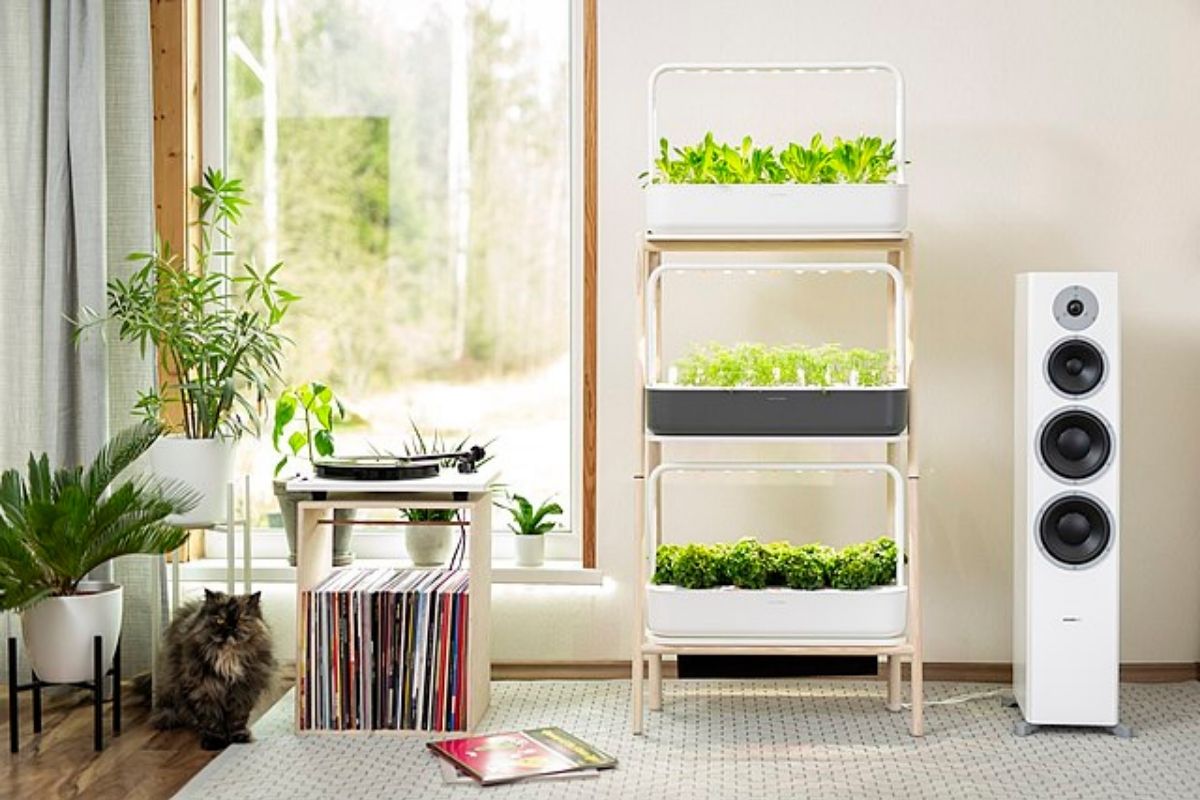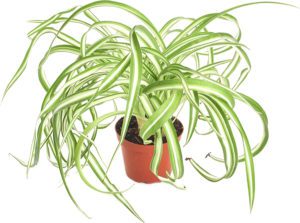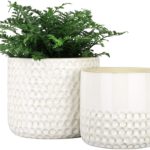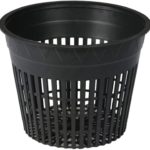Hydro-what? Hydro-why? Hydroponics simply means growing plants in water, and it’s easier than you think. Growing hydroponic houseplants at home is a fun way to take your plant parenting skills to the next level and go pro with your fertilizing routine.
If you’ve ever started cuttings in water, you already have some experience with this effective method for growing healthy plants – but did you know you can keep growing your houseplants in water beyond their cutting stage?
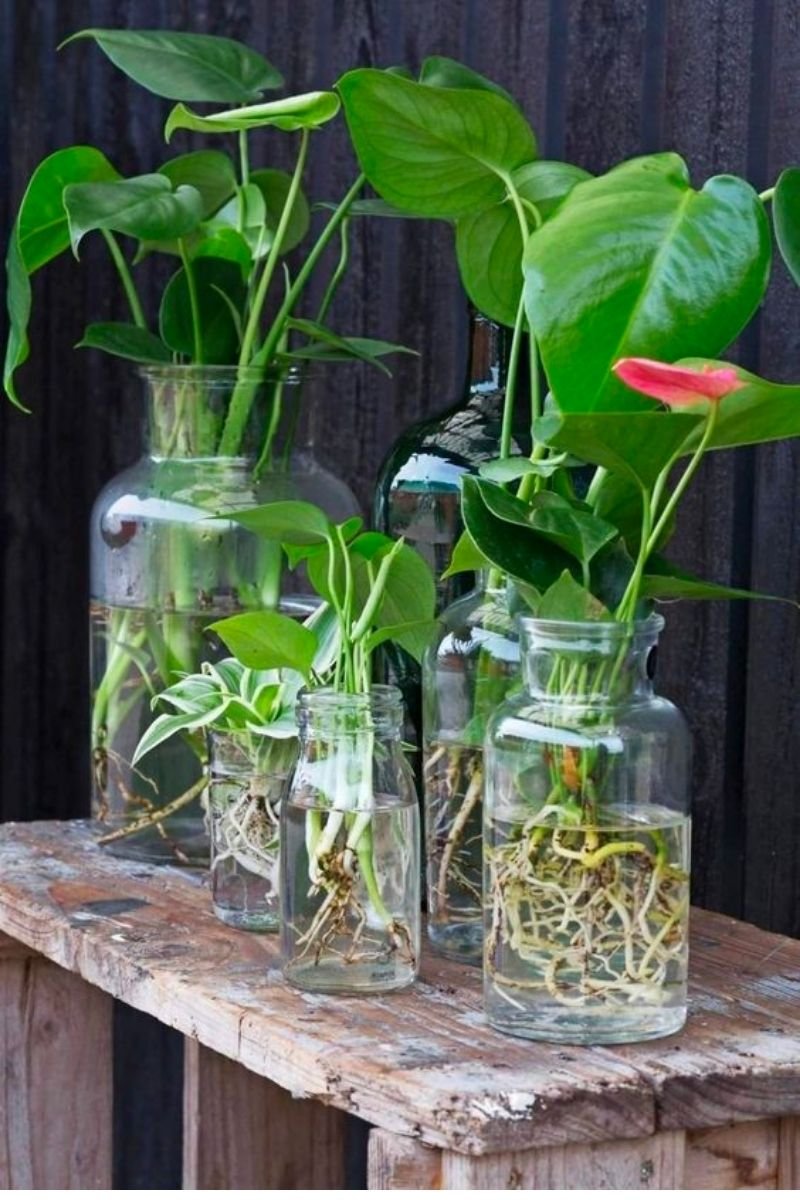
It takes a bit of extra effort to maintain a hydroponic system, but for many houseplant enthusiasts, the benefits are worth it. You can see your plant’s root system development, and say goodbye to the mess of repotting with soil and dealing with the pests that often come burrowed in it.
What is hydroponics?
The word hydroponics is rooted in the Greek ponos, meaning labor. As you might guess, hydro means water, so the word literally means “water doing the work” of growing plants as a medium that replaces soil. While the term hydroponics refers to the general method of growing plants in water, hydroponic systems refer to the whole kit a kaboodle of the process (usually on a large scale) – fertilizers, trays, water circulation, plumbing, etc.
Hydroponic growing decreases the risk of fungus and certain pests stunting plant growth, making it a “cleaner” growing option than using soil. The catch is a bit of additional maintenance for plant parents: The water that hydroponic plants are raised in must be changed or circulated regularly and monitored to ensure that it maintains adequate nutrient and pH levels to feed plants.
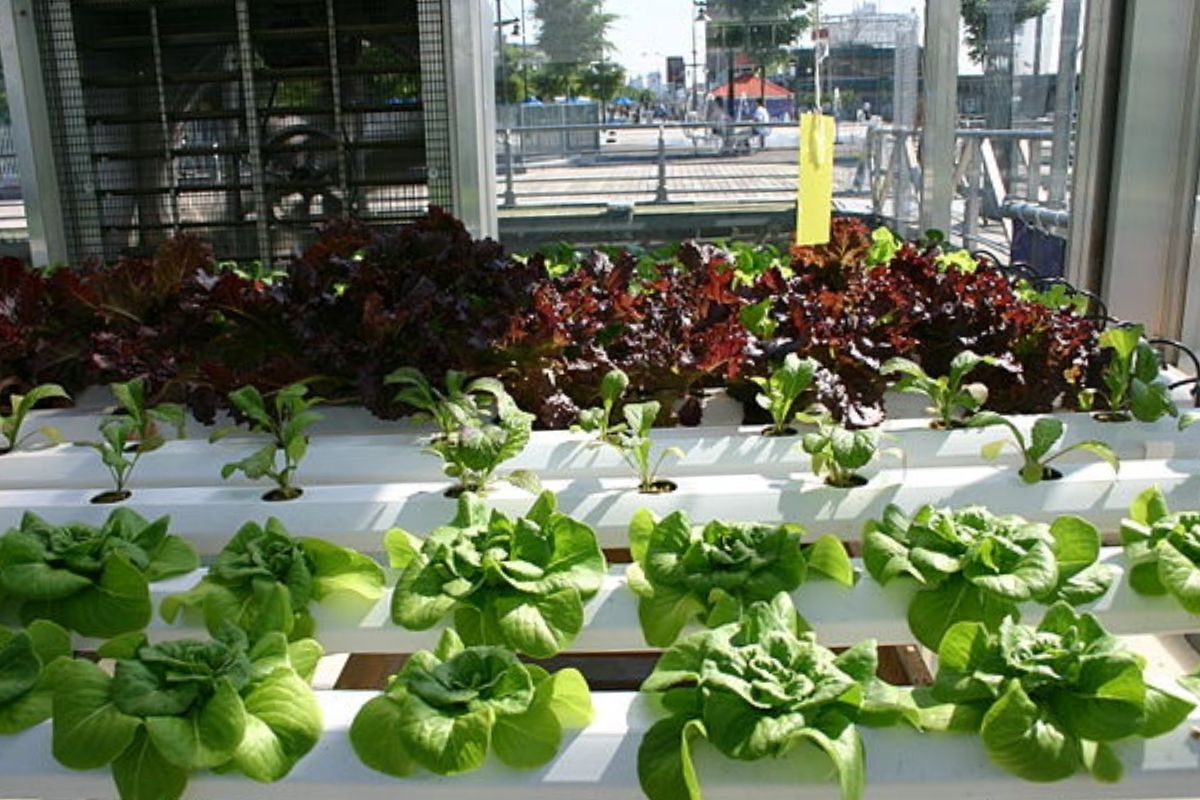
How do hydroponic systems work?
If you’ve seen houseplants in glass jars or greenhouse produce growing in trays, you know that hydroponic systems replace soil as a growing medium. In hydroponic systems, specially formulated fertilizer is added to water, providing all of the nutrients plants usually get from the soil. The method of water delivery to plant roots and the number of air roots exposed varies between systems, which we’ll look at below. “Semi-hydroponic” systems operate on this basic principle as well, combining semi-hydroponic nutrients with a structural, inert (non-nutrient containing) element like LECA (lightweight expanded clay aggregate)or coco coir to retain and transport water and support root growth.
Types of hydroponic systems
There are several common types of hydroponic systems, ranging from simple DIY setups you can assemble on a shoestring budget to complicated systems with a hefty price tag designed for commercial operations. They each have their own advantages and disadvantages and require varying degrees of expertise to set up and maintain. Here are the most common hydroponic systems you’ll find:
1. Still water
Growing plants in a glass jar or vase are the easiest way to set up a hydroponic environment at home for your plant. This method requires that you change the water every two to three weeks and condition the water with nutrients and the necessary pH balancer. This is most popular for small to medium houseplants when you want to be able to see their roots in the glass container.
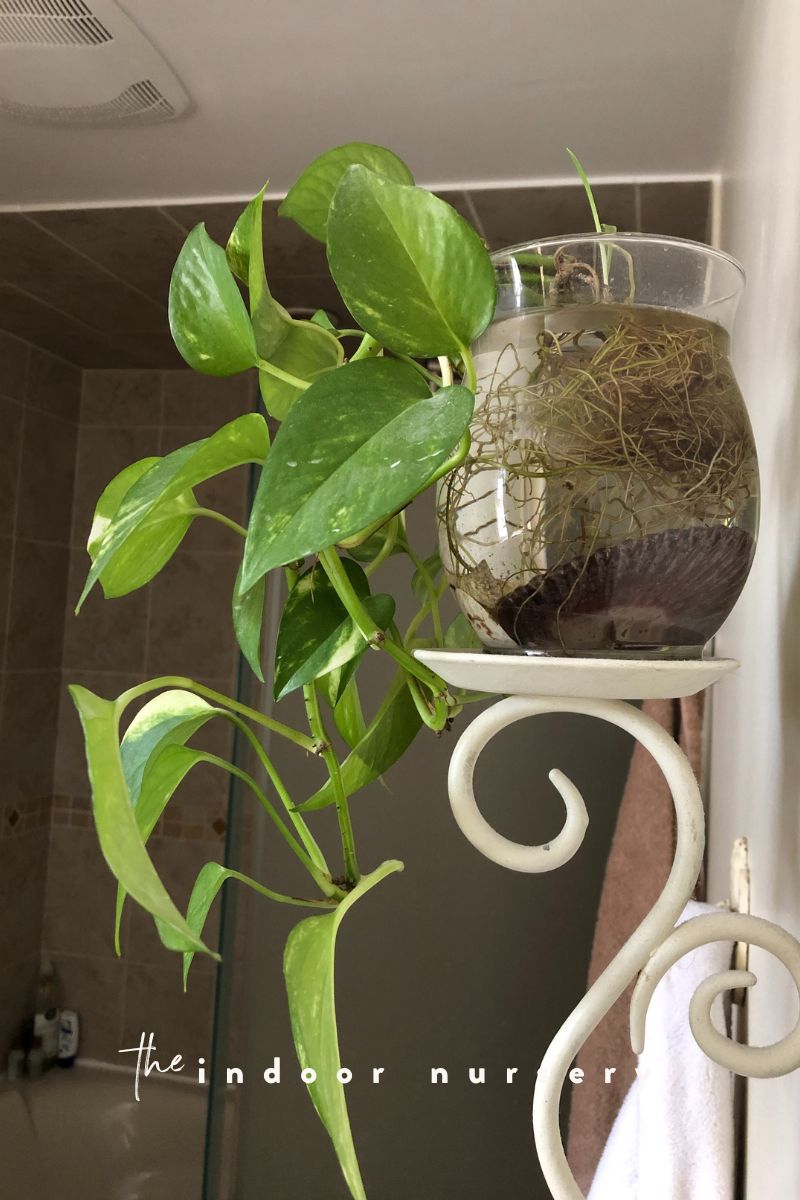
2. Wicking system
Houseplants can also be grown with a wicking system, where an absorbent rope wick or LECA draws water upwards to the plant’s roots from a reservoir below the roots. In these semi-hydroponic systems, the roots are exposed to air and draw moisture from the wicking material as needed. Wicking systems are best for lettuce and herb gardens, houseplants, and seedling starters that benefit from slow, consistent delivery of moisture and nutrients.
3. Nutrient film
A nutrient film growing process uses a tubing system to move a small amount of nutrient-dense water over otherwise air-exposed roots. The “film” refers to the small amount of liquid applied. This hydroponic growing method is best suited to growing herbs, houseplants, foods like lettuce, and other green vegetables in greenhouses or green shelves.
4. Deep water culture
Deepwater culture is a single-tank hydroponics method that uses a pump to oxygenate the water, allowing the plants to extend their roots as deep as they can in the water. This straightforward set-up is ideal for home hydroponics, whatever you’re growing.
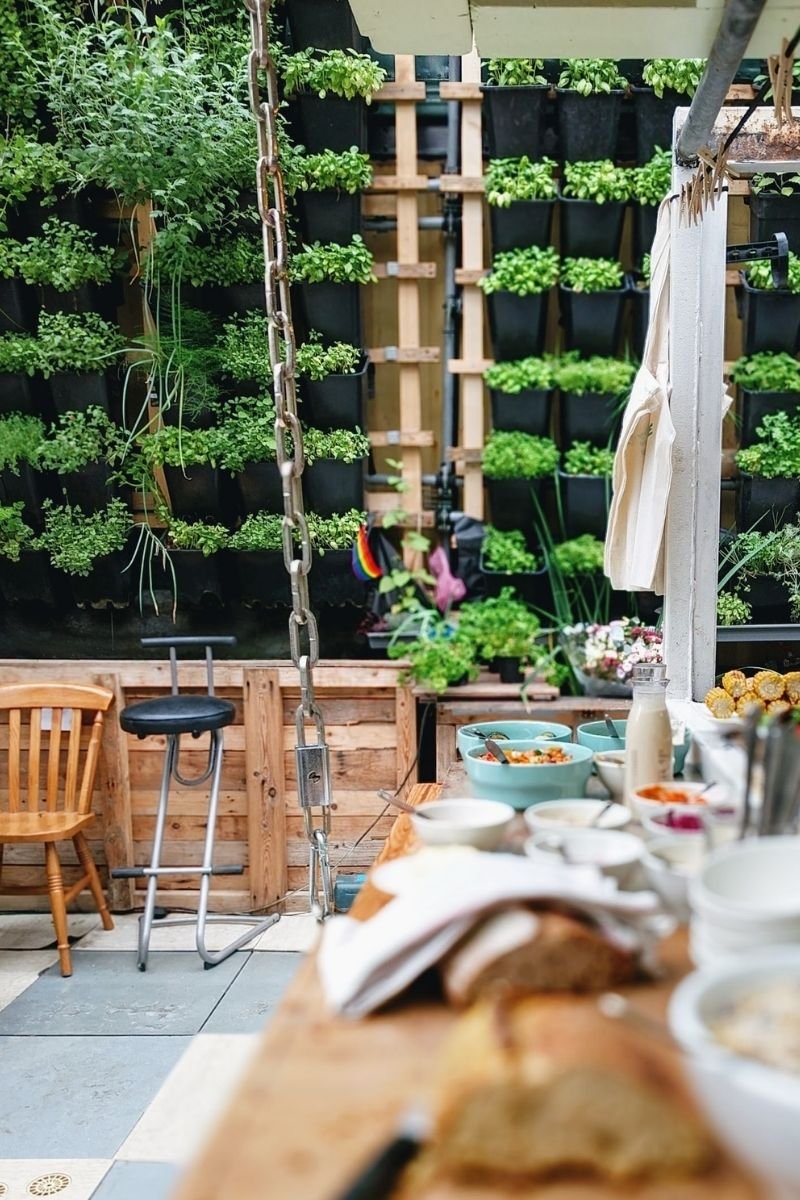
5. Flood and drain, or ebb and flow
This is a method of circulating and aerating water by pumping from a reserve into the plant’s main tank and draining from that tank back into the reservoir. Ebb and flow hydroponics are good for starter plants and plant shelves, lettuce, and herb trays, as well as larger-scale greenhouse production of root vegetables and big leafy greens.
6. Aeroponics
This advanced system of hydroponics uses mist to hydrate plants that are otherwise exposed to the air. Aeroponics is most frequently used in vertical farming for food production and isn’t usually ideal for houseplants.
Which houseplants do well with hydroponics?
Almost all common houseplants can be grown without soil, except large plants and trees that need structural support for their roots (you can grow them in LECA instead). Small- and medium-sized houseplants, however, are usually happy to grow in fertilized water. These include:
- Flamingo Lilly
- English Ivy
- Jade (money tree)
- Monstera
- Peace Lily
- Philodendron
- Pothos
- Snake plant (sansevieria)
- Spider plant
- Syngonium
What happens to plant roots in water
When a plant grows in water rather than soil, the roots form differently. Roots in soil are thicker, fewer in number, and usually longer than plant roots grown in water. This is because, in soil, roots have to push through the physical medium to find pockets of air, water, and nutrients. In addition, plant roots in the soil must establish themselves firmly and spread out to absorb as much moisture as possible, since water filters to the bottom layers of soil between waterings.
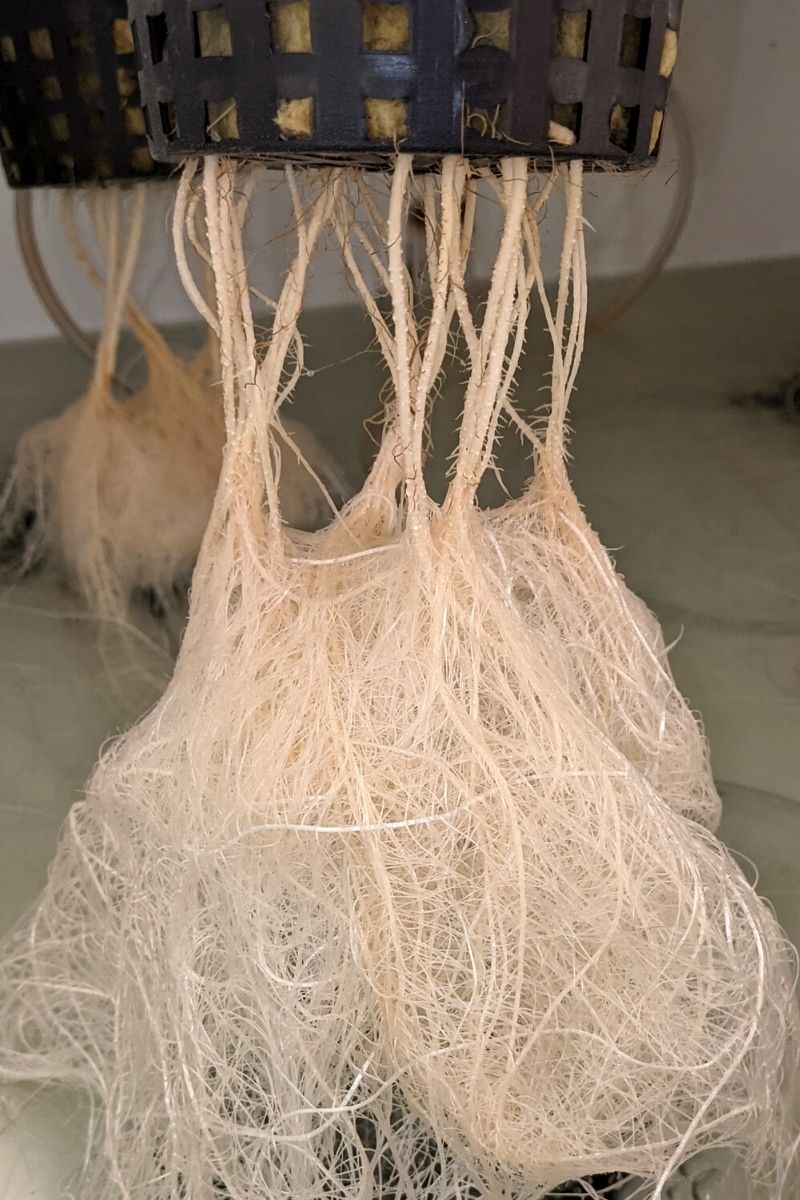
In water, plant roots grow more finely and are more fragile than when grown in soil. They don’t need to seek out air, water, or nutrients, since these particles are more evenly distributed in the water. This means that plants use less energy to grow hydroponically 💡 Plants growing in water are usually supported by the container or, as in the case of semi-hydro systems, a structural, inert medium like LECA. They can be planted in a net pot as well to more easily remove them when changing the container’s water.
Growing houseplants with hydroponics
There are a few things you’ll need to do differently when growing houseplants hydroponically. Here’s what to keep in mind:
Measure your water’s pH and EC to ensure nutrient uptake
Hydroponic systems require regular pH monitoring to be sure that nutrients are being absorbed by the plants. Generally, water with a pH range of 5.5-6.5 (slightly acidic) is best for water-based roots to absorb nutrients. Using a pH meter and an EC (electrical conductivity) meter will help you monitor these levels and keep your plant healthy. The EC level measures the salt content in your water, which is affected by both the water’s starting EC and your nutrient solution. Pure water has an EC of 0, but tap water typically contains dissolved salts that change its conductivity, so it’s a good idea to measure your water before choosing the best nutrient solution for your hydroponic setup. Choose a nutrient solution with an EC between 1.2 and 2.0.
Be gentle when transplanting your soil plants to water
Your mature, healthy plants that have been growing in the soil can be transferred to a water growing medium by cleaning the roots carefully and thoroughly of all bits of soil, then placing the plant’s roots in the fertilized and pH-balanced water. Giving the plant a little root supplement can help it endure the transfer and reduce shock.
Plant propagation in water
All plants can be propagated in water, but those that stay in water for long enough will develop roots adapted for the liquid growing environment. While most plants can be transferred from soil and will adapt, propagating a plant in water to grow water roots is the best way to ensure a successful water establishment. Next time you trim your favorite philodendron, propagate the philodendron cutting in water, and voila! You have your first hydroponic plant start.
Benefits of growing hydroponic houseplants
Growing your houseplant in only water has many benefits that make it worth the extra effort. Hydroponic growing:
- Reduces mess with no soil to spill or host for common pests
- Decreases the chances of provoking people’s allergies to potential fungal growth in soil
- Is fascinating to watch! When you use glass containers, you can watch the roots grow and develop daily
Challenges of growing houseplants in water
This fun and interesting growing method are not without its challenges. While simple still water hydroponics systems for single plants are usually quite easy to maintain, here’s what you should know if going big with your hydroponics:
- Larger systems require an electrical source
- Water must be changed regularly to avoid bacterial buildup and mold in systems of all sizes
- Root rot and water-borne diseases develop quickly if you don’t clean, aerate, and fertilize regularly
Tips
So you want to dive in the deep end with hydroponics growing? Here are our best tips for setting up a successful hydroponics system:
- Don’t totally submerge the roots. When growing plants hydroponically, be sure that most, but not all, of the root base of the plant is under water. The stem and leaves shouldn’t be wet.
- Change water regularly. Water in wicking systems will be absorbed and evaporate, but still water in containers, tank, and reservoir systems need to be changed every two or three weeks to avoid buildup of nutrients, bacteria, and algae.
- Add hydroponic fertilizer. Water is inorganic, and doesn’t provide any nutrients beyond its own molecules. Use fertilizer specifically developed for hydroponics to nourish your plants – these fertilizers are pH balanced and formulated with extra umph to replace soil.
- Monitor and condition the pH. The pH of the water also needs to be regulated as necessary since water quality varies widely by source. The acidity or alkalinity also factors into the availability of nutrients to plants.
- Pop a plant into your aquarium. Yes, you can use your fish tank as a deep water culture hydroponics setup! Plants will thrive in its nutrient-rich water, courtesy of your fishy friends and their #2. They’ll actually help the tank stay clean by absorbing the excess nutrients and waste from the water, so it’s a win-win-win for you-your plant – your fish. Use a twist-tie or another fastener to secure the plant to the edge of the tank, position the roots, and stabilize the stems.
FAQs
Q: What is the difference between growing in water and overwatering in soil?
Roots grown in potting soil are used to dry out, short periods of nutrient unavailability between waterings, and get oxygen from air pockets in the soil. When soil-based plants are overwatered, the soaked soil doesn’t have any air in it.
The plants become unable to absorb nutrients from the lack of oxygen and are susceptible to rot from the excess moisture. On the other hand, hydroponic plants are used to the moisture and they form to thrive in the liquid environment. Like soil-roots have difficulty with too much water, mature water-roots would have difficulty with too-dry conditions and less consistent availability of nutrients.
Q: What color should my plant’s water roots be?
Plants that grow in water will be long, thin, and white, as opposed to the beige or brown color of soil-based roots. If your water plant’s roots are turning yellow or brown, the roots are rotting, most likely from stale water that has lost its oxygen content, or a lack of nutrients.
Q: How are growing houseplants different from growing food hydroponically?
All plants grown in water need light, oxygen, and nutrients, although in different amounts. Flowering and food plants need more nutrients than leafy houseplants and greens, and some species of plants like more or less light than others. A hydroponics system to grow herbs, lettuce, and other edible plants at home usually requires to grow lights, a tray shelf, as well as a pumped-water system to keep the water moving and the plants healthy.
More How To Guides
- How To Get Rid Of Scale On Plants
- DIY Terrarium Table: How To Make A Table With Plants Inside
- How to Use Leca for Plants: Step-by-Step Guide with Pictures
- How To Use Grow Lights For Indoor Plants
- How To Propagate Peperomia Plants 2 Ways
- DIY Propagation Box With Grow Light
- How To Make Pothos Fuller (In 5 Minutes)
- How to Make a Moss Pole for Your Climbing Plants
- How to Make Potting Soil for Indoor Plants, Plus My Secret Ingredient
- How to Propagate a Split-Leaf Philodendron: Easy Step-by-Step Guide

